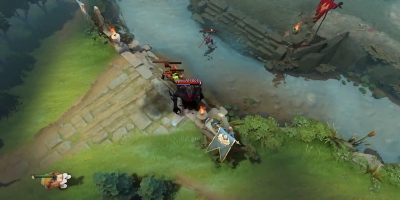A Sony executive says the company’s new virtual reality headset is more than a toy for video gamers, and sports broadcasters and movie producers should take notice.
The headset, which is set to arrive in Australians’ homes from October, has been heavily promoted for its gaming abilities, given it is powered through Sony’s PlayStation 4 console.
But Michael Ephraim, Sony’s computer entertainment boss for Europe, Australia and New Zealand, says its uses will be more far reaching.
 Sony PlayStation’s virtual reality is not only set to change gaming but home entertainment in general, including sport broadcasts and viewing movies. Photo: Bloomberg
Sony PlayStation’s virtual reality is not only set to change gaming but home entertainment in general, including sport broadcasts and viewing movies. Photo: Bloomberg
“I’ve been at Sony for 20 years and this is a real game changer,” Mr Ephraim told Fairfax Media. “The blue sky potential for VR is massive. I think it will only be limited by the creative talents of content producers, whether its sports or movies, real estate and so on. The content world, the sports people, need to embrace this and I’m sure there are plans.”
Virtual reality zone
Australian Football League team Port Adelaide has already dabbled in the technology, creating the code’s first virtual reality zone last year.
 Sony Computer Entertainment Australia managing director Michael Ephraim.
Sony Computer Entertainment Australia managing director Michael Ephraim.
It hired virtual reality production company, Jumpgate Virtual Reality, to film the team running out onto Adelaide Oval for its clash against Sydney in Round 2 during the 2015 premiership season.
The company then processed that imagery, in 3D and with 360-degree views, to give supporters the same feeling of entering the field of a packed stadium.
But such an experience could soon become part of mainstream sport viewing, if Australian broadcasters follow its counterparts overseas.
In October, America’s NBA partnered with Turner Sports to broadcast its first live game in virtual reality.
Australian broadcasters, including Seven West Media and Fox Sports, are yet to reveal if they have similar plans for the technology, but will no doubt be watching VR’s development closely.
Best seat in the house
Fox Sports has already introduced a range of innovative viewing techniques, including its “Best Seat in the House” coverage. That technology used a 360 degree camera to film a game, which was broadcast through Fox Sports’ NRL app, and give fans the feeling of being amid the action while not leaving their lounge rooms.
Mr Ephraim said Sony’s virtual reality headset already supported video footage filmed with omnidirectional, or 360 degree cameras.
He said there was also a cinematic mode, which allowed people to watch their video or gaming content on a virtual 5-metre-wide screen.
“It’s not 360 [degrees] you’re just watching your content, or you can watch whatever else you have pictures, videos. It’s basically also another screen for your PS4 content … be it gaming, movies or pictures.”
But he said this would not mean the death of watching content on television or other screens.
“I really think that VR adds another way of enjoying your gaming content or other content. I don’t think that it’s a replacement.
“People access their content now on four different screens – computer/laptop, mobile, the tablet – this is another medium that allows them to enjoy content in a richer, immersive way.”
VR movies
Movie studios have already begun exploring virtual reality, Mr Ephraim said. Sony Pictures used the technology to promote its 2015 film The Walk, which it focused on high wire artist Philippe Petit’s walk between the World Trade Centre towers in 1974.
“It was the film but in VR you were given the chance to walk the tightrope. We have a video reel of that when people were trying it in the office in New York and it’s hysterical. There were people standing in an office who were unable to take those first two steps onto the tight rope because it was so real.”
But Mr Ephraim was unsure how the technology would translate to complete feature films.
“There are a couple of companies that intend to have movies in VR that you will be able to download, stream, whatever and view on your headset.
“It will be very interesting to see if you play a role in the movie or you are just watching the plot unfold around you.”
[Source:- SMH]

